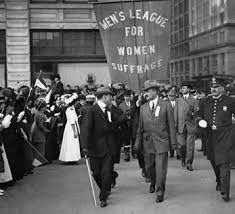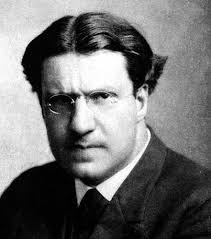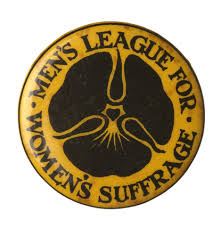—Johanna Neuman
This is the third of a series of posts in the run up to Women’s Equality Day from author and historian Johanna Neuman, about the women whose stories form the backbone of her new book, Gilded Suffragists: The New York Socialites Who Fought for Women’s Right to Vote.
Rabbi Stephen S. Wise is remembered as a leading figure in the Zionist movement, a powerful orator who translated Jewish aspirations to mainstream America. In 1938, he explained the need for a Jewish homeland to Time magazine by saying, “I have been an American all my life, 64 years, but I’ve been a Jew for 4,000 years.” Later, during the horrors of the Holocaust, he became a singular voice of outrage against the slaughter — conducting a mass Stop Hitler Rally and lobbying President Roosevelt to lift immigration quotas and rescue Jews perishing in Hitler’s Europe.
Less well known is that decades earlier, Wise had also been a suffragist. In an era when other Jewish leaders such as Louis Brandeis opposed the vote for women, hewing to a notion that the ballot was reserved for those willing to fight with the bullet, Wise was outspoken in his support. “As long as women are shut out from citizenship and the exercise of the ballot, which is the symbol of citizenship, ours is no democracy,” he said in a speech in 1909, more than a decade before a federal constitutional amendment was ratified. A country where women don’t vote, he said, is “a manocracy” where men use “their brute power to shut women out from the right of equal citizenship.

Even more surprising than his support of the cause was the company he kept in its pursuit. In New York, Wise joined the most exclusive women’s suffrage organization in the city. Agreeing to serve on the board of directors of an invitation-only group headed by Katherine Duer Mackay, the descendant of New York aristocracy who had married the silver mining and cable holdings of Gilded Age wealth, Wise rubbed shoulders with society suffragists experiencing their first political movement.
As the campaign for women’s suffrage began to attract a broad coalition of women from immigrant factory workers to High Society socialites, Harriot Stanton Blatch hit on the idea of orchestrating parades along New York’s famed Fifth Avenue. For the 1912 parade, Blatch, the youngest daughter of pioneer Elizabeth Cady Stanton, insisted on discipline. She banned automobiles, believing they shielded wealthy activists from the chore of walking – or of having been seen walking — for suffrage. “Riding in a car did not demonstrate courage. It did not show discipline,” she wrote later. “Women were to march on their own two feet out on the streets of America’s greatest city; they were to march year by year, better and better.”

They were to dress in white – Macy’s was the official headquarters for suffrage paraphernalia – and march in step with one another, column after column of women, “a mass of gleaming white,” declaring their interest in the ballot. “Eyes to the front,” read her orders, “head erect and shoulders back.” She was trying to feminize the concept of the street parade – with its male overtones of military combat.
But what most fascinated press and public was the decision of an estimated one thousand men to join in the parade. The previous year, eighty-seven men had shown up for a women’s suffrage parade, enduring great derision from sidewalk hecklers. Now, they marched in rows of four across, under the wind-swept blue banner of the new Men’s League for Woman Suffrage. “As if to give courage to the less courageous of the mere men marchers,” reported the New York Times, a band “broke into a lusty marching tune as the men swung from Thirteenth Street into Fifth Avenue.” Perhaps they could still hear the jeers through the drumbeat: “Tramp, tramp, tramp, the girls are marching.”
One of the male marchers was Rabbi Stephen Wise. He brought along his 10-year-old son James, who carried a sign saying, “We want our mothers to vote.” The rabbi wrote in his diary of the derision he encountered along the route. “We had to laugh nearly all the way on account of the things that were shouted at us,” he said in bemused recollection. “For a few moments, I was very warm and took off my hat, whereupon someone shouted, ‘Look at the long-haired Susan.’ Some of the other delightful exclamations that greeted us were: ‘Who’s taking care of the baby? … Oh, Flossy dear, aren’t they cute? Look at the Mollycoddles.’ ” Still, Wise found the event uplifting, because while both male and female “rowdies” shouted insults, “the most hopeful thing” was the “respect (shown) by the intelligent class of people.”
Men did not win the vote for women – female activists did that for themselves. But perhaps this is how social change is made – a few brave souls, amid derision, standing up for what is right.
 Johanna Neuman is a writer, historian and scholar in residence at American University in Washington, D.C. An award-winning journalist and former Nieman Fellow at Harvard, she covered the White House, the State Department and Congress for the Los Angeles Times andUSA Today. She is the author of Gilded Suffragists: The New York Socialites Who Fought for Women’s Right to Vote, available for pre-order now.
Johanna Neuman is a writer, historian and scholar in residence at American University in Washington, D.C. An award-winning journalist and former Nieman Fellow at Harvard, she covered the White House, the State Department and Congress for the Los Angeles Times andUSA Today. She is the author of Gilded Suffragists: The New York Socialites Who Fought for Women’s Right to Vote, available for pre-order now.
Join Book Culture and Harper’s Magazine on Tuesday, September 12th at 7pm for a discussion with Johanna on Gilded Suffragists.
Keep up with Johanna online and on Twitter.


